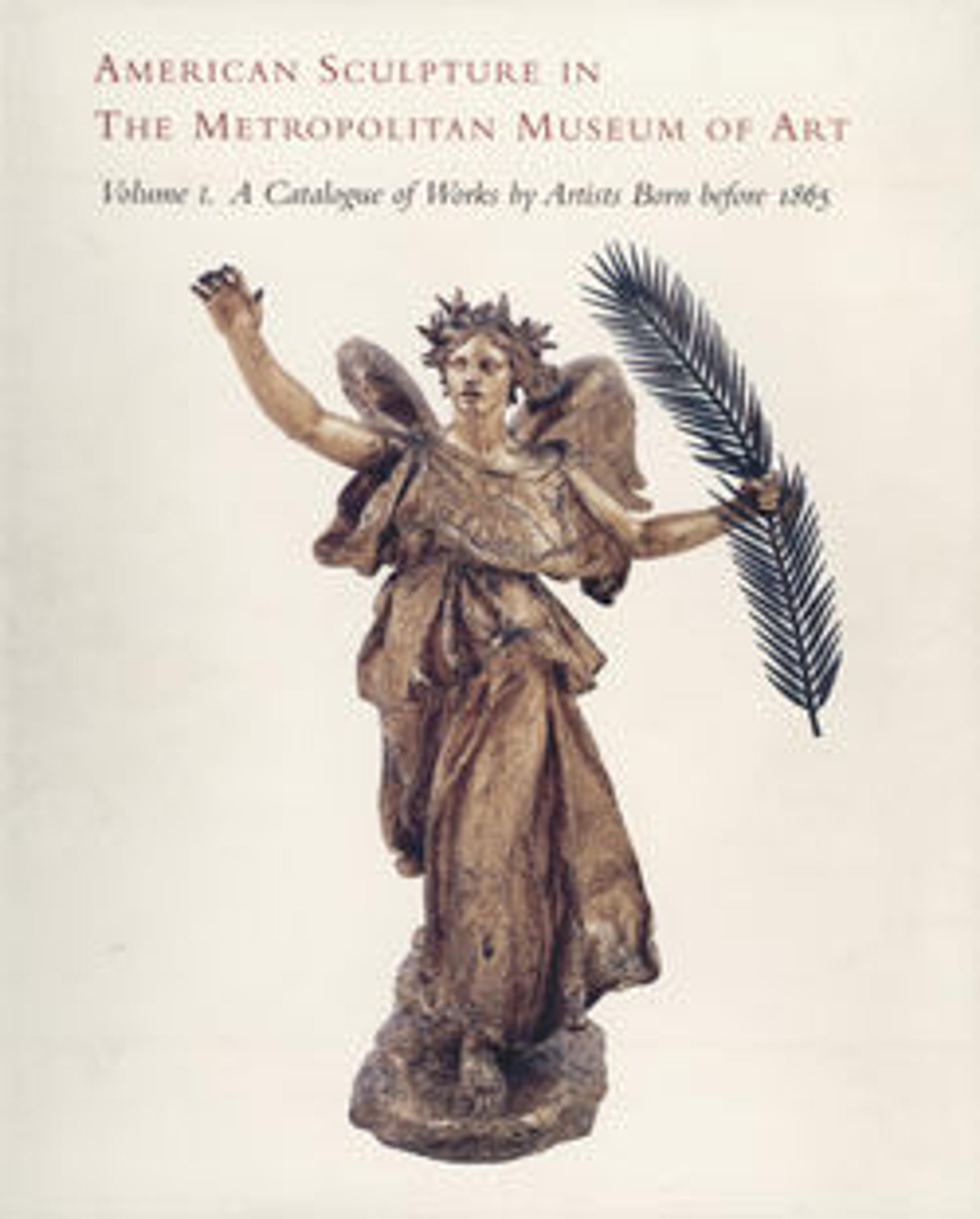The Promised Land
After establishing his reputation in America carving portrait busts of Civil War heroes, Simmons departed in 1868 from his native Maine to Italy. In Rome, which became his permanent residence, he supported himself through portrait commissions. More important and prestigious for a sculptor of this era was the creation of ideal figures depicting themes from religion, history, literature, and mythology. "The Promised Land," the Old Testament phrase that provided the source for the allegorical figure, and is inscribed around the sculpture’s base, may also have served as an epitaph for Simmons’s wife, Emma, who died the year before it was completed. "The Promised Land" depicts a young Hebrew woman in a long sleeveless gown resting against the stump of a palm tree. She wears a laurel wreath indicative of her impending victory, which is her arrival in the land of her forebears. The figure bears the influence of William Wetmore Story, another American sculptor working in Rome, in its seated, contemplative position and exacting anecdotal detail. This marble, carved in 1874, is the first version and was made for Marshall O. Roberts, American steamship financier and noted art collector. It was purchased out of his estate sale in 1897 by J. Ackerman Coles, a Newark, New Jersey physician and offered to the Metropolitan Museum. At some point after Coles purchased “The Promised Land,” an extensive inscription was added to flank the central title. The verse, in Latin and in English, was taken from Bernard of Cluny’s “De contempt mundi.”
Artwork Details
- Title: The Promised Land
- Artist: Franklin Simmons (1839–1913)
- Date: 1873–74; carved 1874
- Culture: American
- Medium: Marble
- Dimensions: 62 1/2 x 34 x 34 in. (158.8 x 86.4 x 86.4 cm)
- Credit Line: Gift of Dr. J. Ackerman Coles, 1897
- Object Number: 97.11
- Curatorial Department: The American Wing
More Artwork
Research Resources
The Met provides unparalleled resources for research and welcomes an international community of students and scholars. The Met's Open Access API is where creators and researchers can connect to the The Met collection. Open Access data and public domain images are available for unrestricted commercial and noncommercial use without permission or fee.
To request images under copyright and other restrictions, please use this Image Request form.
Feedback
We continue to research and examine historical and cultural context for objects in The Met collection. If you have comments or questions about this object record, please contact us using the form below. The Museum looks forward to receiving your comments.
